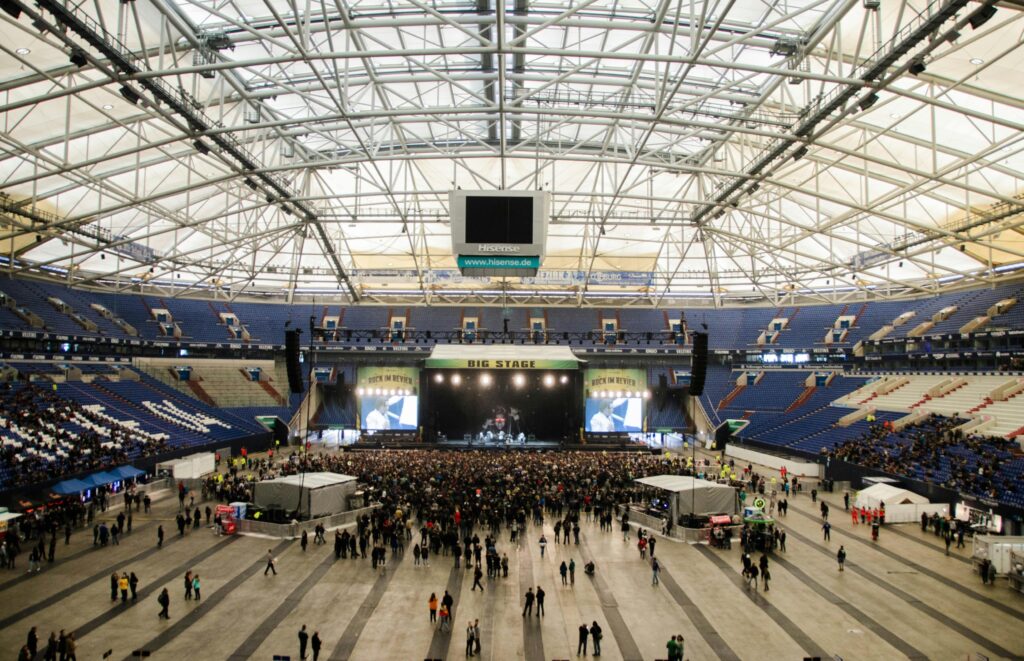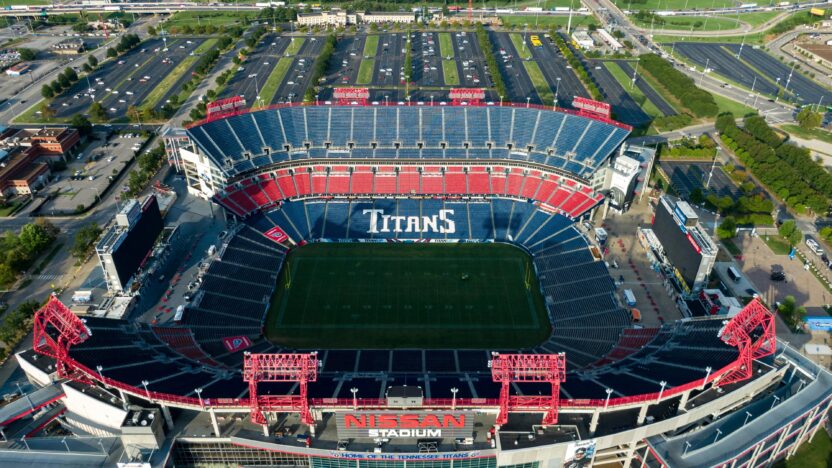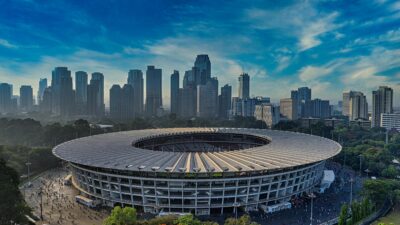Introduction
The stadium construction industry is experiencing a major shift as we move into 2025 and beyond. New stadiums are no longer just sports venues; they are multi-functional arenas that incorporate cutting-edge technology, sustainable design, and enhanced fan experiences.
With global sporting events such as the FIFA World Cup, Olympics, and international football leagues driving demand for new stadium construction, cities worldwide are investing in next-generation stadiums that offer improved accessibility, cost efficiency, and state-of-the-art infrastructure.
Additionally, modular building and installation techniques, digital design tools, and AI-driven facility management are shaping how stadiums are built, maintained, and operated. In this article, we explore the top trends in stadium construction and design for 2025, backed by data, industry insights, and real-world case studies.
Sustainability and Green Stadium Design
Sustainability is no longer a choice but a necessity in stadium construction. With governments worldwide imposing stricter environmental regulations, developers must integrate green building materials, energy-efficient designs, and water conservation systems to minimize their carbon footprint and operational costs.
New stadiums are being designed to be net-zero carbon emitters, utilizing low-carbon concrete, recycled steel, and prefabricated components to reduce construction waste and emissions. Energy consumption is also a major concern, with stadiums accounting for thousands of megawatts of electricity per event. To combat this, developers are integrating solar panels, wind turbines, and intelligent energy management systems to optimize power usage.
Water usage is another critical factor. Stadiums require millions of liters of water annually for pitch maintenance work, fan facilities, and cooling systems. Advanced rainwater harvesting, greywater recycling, and AI-driven irrigation systems are now being used to reduce water consumption by up to 40%.
For example, some of the most advanced stadiums proposed in 2025 will incorporate:
- Retractable roofing with solar panels to generate power while maintaining climate control.
- Hybrid turf pitches that require 30% less water than traditional grass fields.
- Advanced insulation materials that lower air conditioning costs and energy consumption.
The future of stadium construction is centered on energy efficiency, low-carbon materials, and resource planning and optimization, ensuring stadiums of 2025 and beyond meet global sustainability goals.
2. Smart Stadiums and AI-Powered Operations
Artificial intelligence is playing a pivotal role in stadium management and construction. With thousands of spectators attending events, managing crowd flow, security, ticketing, and energy usage manually is inefficient. AI-driven smart stadium systems are now enabling real-time monitoring, predictive analytics, and automated facility management services, making stadiums smarter, safer, and more cost-efficient.
AI-powered crowd tracking systems analyze movement patterns, ensuring smooth entry, exit, and security checks, reducing congestion-related risks. Automated ticketing systems integrated with facial recognition technology eliminate fraud and entry delays, enhancing fan convenience.
Energy and climate control are also being optimized through AI. Smart HVAC systems adjust temperature settings based on real-time occupancy levels, preventing excessive energy consumption during low-traffic hours. AI-driven lighting systems adjust brightness in response to daylight, reducing unnecessary power usage.
In addition, AI-backed predictive maintenance is now enabling stadium managers to identify potential equipment failures before they happen, minimizing downtime and costly repairs. By using digital twins, stadium operators can simulate operational conditions, test infrastructure upgrades, and detect inefficiencies, leading to better decision-making and improved stadium performance.
By 2025, AI-driven stadiums will dominate the global sports infrastructure industry, transforming how stadiums are operated, secured, and maintained.
3. Modular and Prefabricated Stadium Construction
Traditional stadium construction is time-consuming, expensive, and material-intensive. To address these challenges, modular and prefabricated construction products and methods are now revolutionizing how stadiums are built. Prefabricated steel structures, seating arrangements, and roofing components are manufactured off-site and assembled on-site, reducing construction time by up to 50%.
The benefits of modular construction include:
- Lower labor costs due to streamlined manufacturing and assembly.
- Minimal construction waste, making projects more environmentally sustainable.
- Easier stadium expansion and reconfiguration, allowing stadiums to be scaled based on demand.
Several stadiums being developed for the FIFA World Cup 2034 are utilizing modular construction techniques, reducing project costs and environmental impact while maintaining design flexibility.
By 2025, modular construction will become the standard approach for stadium development, helping sports organizations and cities build faster, more cost-effective stadiums without compromising quality.

4. The Shift to Multi-Purpose Stadiums
Stadiums are no longer designed solely for sports events. With rising construction and operational costs, developers are focusing on multi-purpose stadiums that generate revenue beyond matchdays.
New stadiums are integrating:
- Concert venues and entertainment zones, hosting year-round events.
- Shopping malls, hotels, and restaurants to attract non-sports visitors.
- Corporate conference centers and exhibition halls, maximizing commercial potential.
Stadiums are now being designed with retractable pitches, allowing them to complete the transition between different sports, concerts, and business functions within hours. This ensures that stadiums remain profitable even when sports seasons are inactive.
By 2025, every newly planned and constructed stadium will be multi-functional, ensuring financial sustainability and urban development.
5. The Evolution of Fan Experience and Stadium Comfort
Fan expectations have changed significantly in recent years. Modern stadiums are integrating better seating, improved accessibility, and immersive entertainment experiences expected to attract larger audiences.
New trends in stadium design include:
- Ergonomic seating arrangements with optimal sightlines and comfort.
- Retractable roofs ensuring climate control for year-round usability.
- VIP lounges, premium hospitality zones, and smart concession areas for better fan engagement.
- Enhanced stadium acoustics and LED screens, creating a more immersive atmosphere.
With digital advancements, stadiums are also offering augmented reality (AR) and virtual reality (VR) experiences, allowing fans to access real-time match analytics, replays, and interactive content directly from their seats.
By 2025, stadiums will prioritize fan comfort, service, and entertainment as much as sporting events, ensuring higher attendance rates and stronger audience engagement.
Conclusion: The Future of Stadium Construction in 2025 and Beyond
Stadium construction is evolving rapidly, with sustainability, digitalization, and modular architecture shaping plans for the future. As sports organizations, urban planners, and investors push for more efficient, cost-effective, and eco-friendly solutions, stadiums will be smarter, greener, and more multi-functional than ever before.
By integrating sustainable materials, AI-driven management systems, modular construction techniques, and immersive fan experiences, the stadiums of 2025 will set new standards for innovation and profitability.
BuildTwin: Your Partner in Next-Gen Stadium Construction
Looking to build the most advanced stadiums of the future? Contact BuildTwin today to learn how to connect with the industry’s leading stadium engineering and construction experts. 🚀



